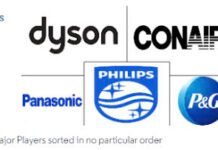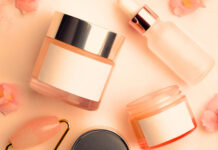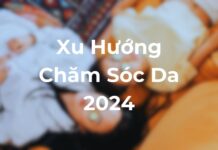The analysis of quantitative data was completed with about ten testimonies. This study makes an update on the specificities of the various media and influencers’ profiles and the main 2021 beauty influence trends.
Brands can no longer afford to map out their strategies without a key element: influence marketing, an essential in the beauty world. Key Opinion Leaders (KOLs) have become creators of inspiring content and both free-spirited intermediates and brand ambassadors. More professional, they break the mould and provide innovation and freshness thanks to an expert, impacting profile. And as the share of online sales and the time spent on social media keep soaring, no doubt this trend will keep growing. Meanwhile, social media increasingly develop technological tools and systems for brands: augmented reality, buy buttons, live shopping…
Instagram: the beauty star media
According to Kolsquare, if beauty has gained such importance on social media lately, it is because this industry banks a lot on visuals and experience. “Beauty digitalization paves the way for technological innovation: today, you can follow a tutorial or test a lipstick on your smartphone. Influence marketing completes these new technologies with a genuine authenticity made possible thanks to the trust relationship between KOLs, subscribers, and brands,” say the platform representatives.

In practice, the format the most widely used by cosmetics brands is image, and by far: 85.9%. Then come videos (10.3%), Instagram stories (2%), and Instagram videos (IGVT), which represent 1%.
A visual network par excellence, Instagram is by (very) far the number one medium for beauty and lifestyle. Statistics are quite clear: 90.4% of the 1,210,622 publications related to beauty analyzed in 2020 are on Instagram.
With over one million beauty contents counted in 2020, Instagram offers a great variety of formats (feed, stories, lives, reels, IGTV). Lives actually boomed during the first lockdown with 800 million active users every day in April 2020. According to Kolsquare, this format helps brands and influencers increase their communities’ commitment with a place where they can interact live. The use of Reels has also made steady progress since summer 2020. These 15-second videos are much popular among brands, in particular when it comes to explaining how to use a product or launching a challenge.
It should be said that 90% of Instagram users follow at least one brand, and 130 million click on a shopping post every month to learn more about a product.
As regards the commitment rate, TikTok is actually the most efficient, with 4.9%, followed by Instagram (1.07%), YouTube (0.5%), Facebook (0.15%), and Twitter (0.03%).
If it is still far from Instagram, audience-wise, TikTok is gaining ground, especially among the young generation. On TikTok, beauty is at the core of trends, along with other themes like video games, sports, fashion, family and education. According to the latest TikTok for Business report, in 2020, beauty videos grew by 90% in France, 41% in Germany, Switzerland, and Austria, and up to 238% in Spain. “On TikTok, people talk about both beauty and blemishes. They celebrate inclusiveness, difference, and mutual help. This creative community is redefining beauty: they want it to be greener, more transparent, and representative of diversity. The most viewed videos are tutorials, tips and tricks, and product tests,” emphasize Kolsquare experts.
As for YouTube, it is undeniably the network for beauty tutorials: it is more adapted to longer, detailed videos.
A green, inclusive, committed beauty for 2021
According to Kolsquare, beauty will be green, inclusive, and committed in 2021 on social media. The influence marketing platform mentions several typical hashtags and influencer profiles for the year:
#skincare – In 2020, a new group emerged among beauty KOLs: skinfluencers – skincare enthusiasts. This group is completed with pharmfluencers, who have a more scientific profile, so they can talk about product ingredients and skin types.
#selfcare – The return to naturalness is on a roll, as minimalism is put on the spotlight, as well as the no-makeup and vegan trends. These trends actually grew in 2020, with minimalist, or even no makeup, and reduced rituals: a movement called skip-care. Green brands like Lush, Origins, and Typology boomed.
#filter – Augmented reality and virtual reality are more and more widely used in the beauty sector. They make it possible for users to directly test makeup products or accessories. This testing system has thrived since the sanitary crisis began.
Affiliation: a key lever
Influencer remuneration according to the sales generated via a commission calculated with a tracking system (affiliate link, url tracker, promotional code, dedicated Amazon e-shop) is extremely popular in the beauty sector, because it is both efficient and simple. However, to be satisfactory for both advertisers and influencers, it should be based on mutual trust. This key lever requires a clear contract, Kolsquare experts explain.
The power of data
Still, for brands, the main challenge lies in identifying the most relevant influencers. To this aim, Kolsquare promotes their own solution based on the aggregation and analysis of data targeting influencers according to their audience, commitment rate, number of followers, themes they deal with, or even the brands they partner with. “Big Data and machine learning help target particular influencers, learn about their objectives, and also accurately measure a given campaign’s ROI,” highlight the platform experts.
In conclusion, Kolsquare emphasizes the fact that KOLs’ creativity, which keeps being expressed through new formats, is an added value and a key advantage for brands. However, as authenticity is more than ever a guiding principle in influence marketing, contacting influencers at random, without taking the time to get to know them and target them, is no longer efficient. As consumers increasingly expect transparency and authenticity, it has become crucial for brands to interact with their ambassadors: they have a lot to gain by appropriately targeting their influencers and maintaining complicity with them.
Footnotes
Method: the study is based on the analysis of 1.7 million KOLs, including 54,960 beauty profiles, between January 2020 and January 2021. These KOLs were identified thanks to beauty-related hashtags and are present on Instagram, YouTube, TikTok, Facebook, or Twitter. A more in-depth analysis was carried out based on the Kolsquare influencers present on Instagram, with a focus on the United Kingdom, France, Germany, and Spain.
Nguồn: https://www.premiumbeautynews.com/en/social-media-new-beauty-influence,18406



